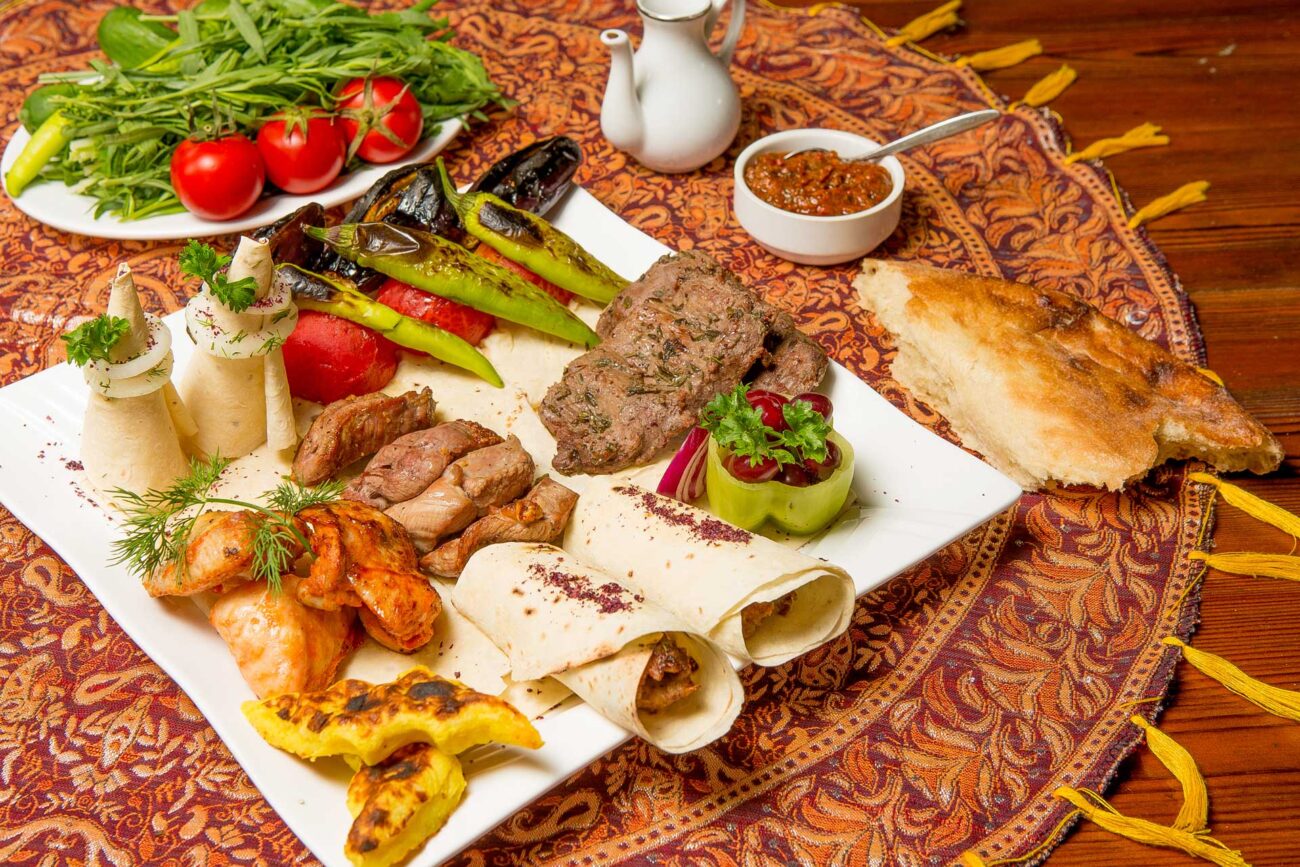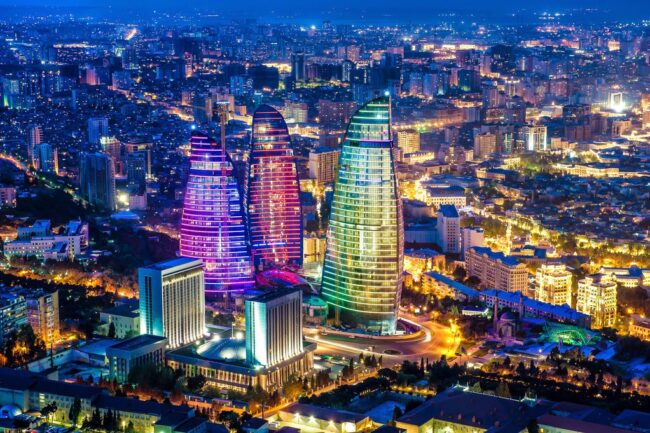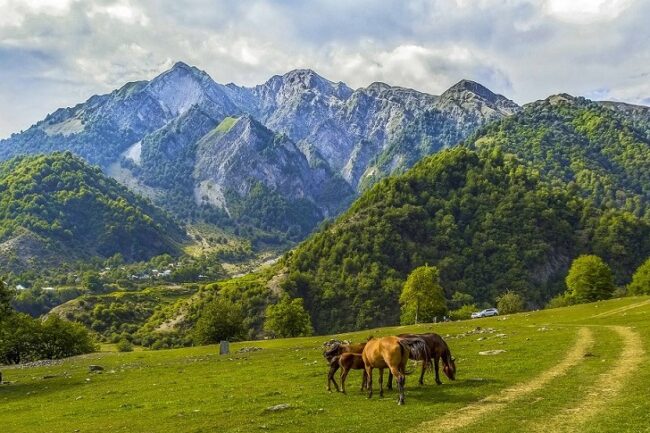Azerbaijan
About Victory Tours
Victory Tour is a Destination Management Company founded in 2005 and based in the capital city of Baku. With more than 16-years of experience, they provide wide range of travel services as an Inbound Tour operator in Azerbaijan, from tailor-made tours for FITs and leisure groups to major conferences and events’ organization.
- Victory Tour currently has a steady reputation as one of the most professional travel companies in Azerbaijan providing high-quality services to corporate clients and individuals. Victory Tour cooperates with both Azerbaijani and foreign organizations and companies related to the tourism business: airlines, embassies, hotels, museums, insurance and transport companies, etc.
- Along with the current tour offers related to the rich history and heritage of Azerbaijan, scenic nature and the Caspian Sea, delicious food and wine, their professional team is constantly working on new ideas and routes, so the travelers may discover more of the country and get unique impressions of Azerbaijan.

Vusal Hajiyev
Product & Services
- Leisure Tours & Excursions
- FIT & group programs
- SIC tours (English, Russian)
- Family tours
- Corporate services, Visa support, Travel Insurance
- Airport pick up & Car Rental
- MICE services
Contact Info
- 22, Suleyman Vezirov, AZ1005
- Baku, Absheron
- Azerbaijan
- +99450 3283696
Top Activities
- Enjoy the unique architectural blend of East and West in Baku.
- Explore the Old City with its narrow streets and the Shirvanshah Palace.
- Take a spectacular view from the top of the Maiden Tower.
- Relax and enjoy the refreshing Caspian Sea breeze while cycling along the Seaside Boulevard.
- Discover ancient rock art at archaeological site of Gobustan.
- Hike in the breathtaking mountains of the Great Caucasus.
- Try your best at skiing on the resort of Shahdag in the north of Azerbaijan.
- Taste the Azerbaijani wines and varieties of traditional cheese in Shamakhi region.
- Be amazed by the crafts making in the ancient city of Sheki.
Top Selected Tours
Do you need a quotation or more details?
About Azerbaijan
Azerbaijan is a magnificent country located at the boundary of Eastern Europe and Western Asia, on the coast of the Caspian Sea. Being a part of the South Caucasus region, Azerbaijan has always played a significant role in the international trade and the Silk Road history. It is often called «The Land of Fire» due to the rich deposits of oil and gas, that made the country a center of fire worshipping for ages.The country is bounded by Russia on the north, by Turkey on the south-west, by Iran on the south, by Georgia on the north-west, and on the west by Armenia. Population of the country is slightly more than 10 million with 3.5 million people residing in the capital city of Baku. Azerbaijan is a multicultural country with many ethnic groups living there since the ancient times. It covers the area of 86,600 sq. m. and famous for the diversity of climatic zones and beautiful nature: from the mountainous north to the subtropical south.
The earliest evidence of human settlement in Azerbaijan dates back to the late Stone Age. The remains of inhabited caves, burials and petroglyphs from the Upper Paleolithic to the Middle Ages could be found in Gobustan reservation located on the south-west from Baku. The Scythians, who were the early settlers in 9th century BC, then were followed by the Medes Empire, later integrated into the Achaemenid Empire around 550 BC. That was the era of Zoroastrianism. For about 6 centuries, most of the territory of Azerbaijan was covered by Caucasian Albania which led to the spread of Christianity and Albanian Churches in the north-west. In the first half of the 7th century, Caucasian Albania, as a vassal of the Sasanians, came under nominal Muslim rule due to the Muslim conquest of Persia.
The earliest evidence of human settlement in Azerbaijan dates back to the late Stone Age. The remains of inhabited caves, burials and petroglyphs from the Upper Paleolithic to the Middle Ages could be found in Gobustan reservation located on the south-west from Baku. The Scythians, who were the early settlers in 9th century BC, then were followed by the Medes Empire, later integrated into the Achaemenid Empire around 550 BC. That was the era of Zoroastrianism. For about 6 centuries, most of the territory of Azerbaijan was covered by Caucasian Albania which led to the spread of Christianity and Albanian Churches in the north-west. In the first half of the 7th century, Caucasian Albania, as a vassal of the Sasanians, came under nominal Muslim rule due to the Muslim conquest of Persia.
From the late 8th century, the dynasty of Shirvan formed the longest-surviving state in northern Azerbaijan, and Baku became the capital. From the mid-9th century to the early 16th century, was a period when the Palace of Shirvanshah and the Maiden Tower were built. Nowadays, the Old City with its monuments are included UNESCO World Heritage List.
After the Iranian and Russian Empires rule, in 1918, the Democratic Republic of Azerbaijan became the first modern, secular Muslim democratic state in the world. In 1920 it was incorporated into the Soviet Union and was a part of USSR for 70 years.Since 1991, Azerbaijan is an independent, developing, oil-producing country with a diversified industrial base.
Modern Azerbaijan is a country of contrasts and home for many natural, architectural and industrial miracles: phenomenal mud volcanoes in Gobustan, iconic Heydar Aliyev Center and Flame Towers in Baku, unique Naftalan oil and many more.
After the Iranian and Russian Empires rule, in 1918, the Democratic Republic of Azerbaijan became the first modern, secular Muslim democratic state in the world. In 1920 it was incorporated into the Soviet Union and was a part of USSR for 70 years.Since 1991, Azerbaijan is an independent, developing, oil-producing country with a diversified industrial base.
Modern Azerbaijan is a country of contrasts and home for many natural, architectural and industrial miracles: phenomenal mud volcanoes in Gobustan, iconic Heydar Aliyev Center and Flame Towers in Baku, unique Naftalan oil and many more.


Baku
The capital and vibrant city where East meets West, a truly contemporary city criss-crossed by history

Gabala
Located in the foothills of the Greater Caucasus Mountains, Gabala is the perfect getaway. Scenic nature, lakes, magnificent forests and breathtaking mountains.

Sheki
Ancient city with rich history, tasty cuisine and UNESCO monuments. Peaceful and relaxing.